|
2022 is coming to a close. I’ve heard so many friends of late long for the proverbial “good-old days” when our lives had the backdrop of happiness, and a less stressful existence, or at least the power to make it that way. The New Years holiday of my youth and younger days came with less personal responsibility of course, but capped the "hap, hap, happiest time of the year," and gave us pause to reflect over the past 365 days with admiration of the accomplishments, events, blessings and, most importantly, interactions with fellow humans. Robert Burns’ immortal song “Auld Lang Syne” is synonymous with New Years Eve, as it can be commonly heard at the stroke of midnight. The title translates to "times long past." Believe it or not, this tune was once a popular choice sang or played at funerals as well. It is quite fitting because the song begins by posing a rhetorical question: “Is it right that old times be forgotten?” The answer is generally interpreted as a call to specifically remember long-standing friendships and, in particular, those friends. Alternatively, the word "Should" may be understood to mean "if" (expressing the conditional mood), referring to a possible event or situation. Regardless, in this era of chaotic world events and cancel culture, we frequently chose to forget, villify or discount people, places and happenings. As a professional historian and "memorialization lobbyist," I protest the erasing of the past. We must always remember and take life lessons from past events and those involved. Perhaps as a cemetery employee, it may seem trite to share with you that my favorite quote is one from the German philosopher Friedrich Nietzsche: “What doesn’t kill you, makes you stronger.” Challenges and discomforts should be remembered just as much as triumphs as part of the total human experience. They should stick with us, be learned from and continually inspire us. They can provide support and confidence for future situations, often having the ability to provide answers if we utilize our heads to think critically. We can figure out anything over time. Working in a cemetery, I often hear the term "soul" bantered about, which is defined by Merriam-Webster as "the immaterial essence, animating principle, or actuating cause of an individual life. This is the spiritual principle embodied in human beings, all rational and spiritual beings, or the universe." In layman's terms, your soul is the part of you that consists of your mind, character, thoughts and feelings. Of course from a religious or spiritual bent, many believe that your soul continues existing after your body is dead. This is why the song "Auld Lang Syne" has the power to stir emotions galore, especially on this last day of the year, if you allow yourself to follow its instruction. That in mind, (both literally and figuratively), I am fortunate to research and explore the events and souls of our past through the portal of gravestones resting above the mortal remains of people that lived in "times long past." For this week's story, I decided to look deeper into Frederick's history and former residents as it pertained to our current holiday by exploring the scene through the lens of those living in it "real time." I arbitrarily chose to pick New Years Day, 1873—150 years ago. In a way, we have certainly come so far, and have a tendency to dismiss those situations and people of yesteryear because we have technological advancements those people could likely never have dreamt of. That said, we possess the tools to immediately access the most powerful gift of all, information. However, we seem to think that our smartphone (and its litany of apps and access to the worldwide web) is the key to everything. It is a great help, but we need to keep in mind a way to work without it from time to time. What is paramount is an individual’s brain, and the opportunity in all of us to think critically. This is not only the impetus responsible for creating the universe of gadgets around us, but the key to using said technology and advancements for the best and enlightening purposes to assist in informing and entertaining mankind. People of past times had brains too and could critically think as well, and did not have the crutch of a smartphone in their back pocket to Google any answer they desired. They had ingenuity, a term seldom used, but one I employed to title my college application essay to the University of Delaware back in 1985. Defined as the quality of being cleverly inventive or resourceful, I learned this word, and moreso concept/quality, from my parents, teachers, and friends as those several generations before had done. We also sought answers from these things called books, and if not available, we sought out other human beings that were labeled as “well-read" and knowledgeable. To get a flavor of the year 1872 from a world perspective, read Jules Verne's adventure novel Around the World in Eighty Days as it was published in that particular year. (Note: PBS aired an 8-part series based on this work in in January 2022.) Here are just a few of the "headlines" of that particular year: *February 20 – The Metropolitan Museum of Art opens in New York City. *March 1 – In the United States, Yellowstone National Park (once dubbed "Colter's Hell" after John Colter, of the Lewis and Clark Expedition) is established as the world's first national park. *March 26 – Lone Pine earthquake shakes eastern California in which 27 people are killed and 56 injured. *The magazine Popular Science is first published in the United States. *May 10 – Victoria Woodhull becomes the first woman nominated for President of the United States, although she is a year too young to qualify and does not appear on the ballot. *May 22 – Reconstruction: U.S. President Ulysses S. Grant signs the Amnesty Act of 1872 into law, restoring full civil rights to all but about 500 Confederate sympathizers. *July 4 – The Society of Jesus is pronounced illegal in the German Empire. *September 26 – The first Shriners Temple (called Mecca) is established in New York City. *The Virginia Agricultural and Mechanical College begins its first academic session (the university is later renamed Virginia Tech). *The first case is reported in Toronto, Ontario, Canada, of the Great Epizootic of 1872 (equine influenza, or the "horse flu") which will substantially disrupt life in North America by mid-December. *November 5 Ulysses S. Grant defeats Horace Greeley in the 1872 United States presidential election Women's suffrage: In defiance of the law, American suffragist Susan B. Anthony votes for the first time (on November 18 she is served an arrest warrant, and in the subsequent trial is fined $100, which she never pays). *November 9 – Great Boston Fire of 1872: In Boston, Massachusetts, a large fire begins to burn on Lincoln Street (the 2-day disaster destroys about 65 acres of the city, 776 buildings, much of the financial district and causes $60 million in damage). *November 13 – Claude Monet begins painting Impression, Sunrise (Impression, soleil levant, the painting that will give a name to Impressionism) as viewed from his hotel room at Le Havre in France. *November 29 — American Indian Wars: The Modoc War begins with the Battle of Lost River. *November 30 – The first international Association football match to be recognized (retrospectively) by FIFA as "official" takes place at Hamilton Crescent, Scotland; the result is Scotland 0-0 England. Earlier international football matches had already taken place in 1870, in 1871 and again in 1872 at the Oval, London. *December 21 – Challenger expedition: HMS Challenger (1858) sails from Portsmouth, England, on the 4-year scientific expedition that lays the foundation for the science of oceanography. Interestingly, both presidential candidates had visited Frederick, and particularly the Great Frederick Fair, in previous years. Ulysses S. Grant came in 1868 and 1869. His competitor in the 1872 election was the man who first uttered the famous quote: "Go west young man." This was Horace Greeley, the famed New York Tribune newspaper editor. Greeley delivered the agricultural address in 1871. In addition, it was during this year of 1872 that universal public schools were called for and a few legendary Civil War heroes, with special ties to Frederick, died. One of these was the impetus for our very own National Museum of Civil War Medicine, Dr. Jonathan Letterman, American surgeon, and "father of battlefield medicine" (b. 1824). The other was Gen. George Gordon Meade, who was given charge of the Union's Army of the Potomac at Prospect Hall just days before the Battle of Gettysburg. Both men had traversed the city streets of Frederick a decade earlier. I often get lost in reading old newspapers, something that can be accomplished with a remarkable technological advancement of its time—microfilm. I have to admit that I am also spoiled to have the ability to read old newspapers online with subscription services to historic editions of local newspapers. Perusing vintage papers remains one of the most rewarding pursuits for knowledge, information and entertainment for me, and I feel like a time traveler who, of course, knows the future that these individuals did not know yet at the exact time of publication. Now let's get back to the star of this article, the January 1st edition of the Frederick Examiner newspaper. Here was the editor’s note of good cheer for the new year, as he summed up the past one. The last line of the article states a firm purpose, “one that the gift of a new lease of time will fulfill every duty and for the health, peace and happiness of our fellow beings.” I love that sentiment and wish that for all in the upcoming year. I couldn’t find out what exactly happened at midnight, perhaps church bells were rung? Even though he may have been around then, Dick Clark did not provide a Rockin’ New Year’s Eve because there were no televisions, radio, or Rock ’n’ roll for that matter. Of course, I kid, as Dick Clark was not born until 1929. But I am so thankful that I had him usher in new years for me from 1972 until 2012. I bet Downtown Frederick had revelry, drinking and caroling. Apparently, the town hosted an annual masquerade parade on New Years Day according to an article in the 1873 edition. I’m sure it was a far-cry from Pasadena’s Rose Parade, but it was exclusively Frederick, and that’s all that counts. I wanted to make connections to the cemetery with this exercise, and I found five great ones. As a matter of fact, I soon pictured myself in mind in a terrific vantage point—standing in Mount Olivet’s Area D, up near the Key Memorial Chapel. I have included the map below as a guide because I know most readers don’t see the cemetery like I do as a series of lettered Areas and numbered lots. In the Frederick Examiner on the date in question, I naturally found a few obituaries of Fredericktonians that would be soon buried here. Mind you they didn’t die on January 1st, as this was the January 1st edition published a day earlier due to constraints of the time. The weekly paper did not have the means of including up to the minute obits, and lacked the high-tech publishing and delivery methods as well. Two decedents of that last week of December included William Blake and George Murdoch. Mr. Blake was born August 11th, 1827 and died on December 30th, 1872. William Blake was laid to rest in Area H/Lot 87. Although this is a few hundred yards distance from George Murdoch’s final burial place of Area G/Lot 49, its very close to Murdoch’s first “home” in Mount Olivet as one learns from reading George Murdoch’s obituary in the January 1st Examiner newspaper of 1872. Mr. Murdoch passed on Christmas Day of 1872, but with the ground being too hard to dig because of snow and cold weather, his body would be placed in a new accommodation to the cemetery in 1871—the Public Vault. This building once stood on the fore-mentioned site of the Key Memorial Chapel. This structure kept loved one’s bodies in cold storage until better weather for hand digging as there were no ditch witches and mechanical apparatus at the time to dig graves in the frozen ground. Sometimes, families had to wait until the spring thaw for the proper burial of their decedent in the family lot. The Public Vault slowly lost its importance and necessity in the early 1900s as the cemetery acquired mechanical digging means. This gave way for the construction of a mortuary chapel at the request of cemetery lot-holders who desired the opportunity to have a dignified indoor service on cemetery grounds. You may recall that most wakes of the earlier time period occurred at the decedent’s home, and the undertaker led the funeral procession from there to Mount Olivet where a graveside service occurred. One of those busy undertakers here in Frederick at the time was Clarence Clarendon Carty (1847-1911), who recently opened his business, which also centered on furniture-making, a few years prior. An ad of his appears in the four-page version of the New Year’s Day Examiner. I have documented Mr. Carty’s life in an earlier edition of Stories in Stone. He drove by Mount Olivet’s Public Vault many times each week, delivering bodies to family lots for proper burial. He would die in 1911, just prior to the construction of the Key Chapel, however this structure (as was the Public Vault before) is in plain sight of his grave. He is buried cat-a-corner from the chapel in Area A/Lot 62 between first wife Joanna and second wife, Ann Catherine. Two final comments on the fore-mentioned Public Vault. The basement of today's chapel was the same belonging to the vault. The iron front doors (seen in the earlier image) were kept and still exists as they were re-installed in said basement. The cupola that once adorned the Public Vault was repurposed for the original kiosk, or gazebo, that once stood in between Areas T, U, S. That structure stood from 1915 until the early 1950s. This past year of 2022, we erected and dedicated the Mount Olivet World War I Memorial Gazebo on that very spot within T, U, and S and invite you to visit next time you find yourself in the cemetery. This project was part of the Mount Olivet Preservation and Enhancement Fund, an IRS recognized non-profit charity, and fundraising efforts conducted by our Friends of Mount Olivet membership group. We hope to raise additional funds in 2023 to add three NPS-style, tabletop interpretive exhibits. In addition to the World War I Memorial Gazebo, another great accomplishment for our preservation arm came in the form of an interpretive exhibit at the gravesite of Frederick's legendary diarist Jacob Engelbrecht in Area H. This occurred back in June as part of our annual Flag Day Author's Lecture and can be found not far from the Key Chapel along the central cemetery drive in Area H. Thinking back on this, I wondered what Jacob had to say about New Years Day, 1873 in his legendary journal. This son of a Hessian soldier captured during the American Revolution, kept a journal of Frederick daily events from 1818 up through his death in 1878. He, of all past residents, was certainly familiar with the importance of "Auld Lang Syne," as he actually embodied it! In looking up his entry for January 1st, 1873, I would soon find one of his most poignant and solemn posts: "Death—I have now to record the death of my wife, Eliza Engelbrecht, who died day before yesterday at 5 and 1/4 o'clock PM at the age of 69 years 6 months and 26 days being born June 4, 1803. She was the daughter and oldest child of John and Rebecca Ramsburg who lived near town (about 1 mile due west from the courthouse). We were married "May 29, 1825." So we lived as man & wife for nearly 48 years. But death came at last and I know not when I shall be called away. The Lords work will be done. She was buried this afternoon at 3 o'clock at Mount Olivet Cemetery." Jacob Engelbrecht Wednesday, January 1st, 1873 at 9 and 1/2 o'clock PM. I must confess that I had already been tipped off, however, because I had seen Eliza Engelbrecht’s obituary in the Examiner of January 1st, 1873. As Jacob wrote, she was laid to rest here in Mount Olivet on New Years Day, having died on December 30th. Now, I know that keeping up with my random and rambling nature of leading you through history here in this article could be considered (by some) "like pulling teeth" as the old expression goes. And so said, that is the perfect segue to another advertisement (or two) found in the January 1st Frederick Examiner. Dr. Lloyd T. MacGill, Sr. is buried in Area A/Lot 80, with the Key Chapel is in the background. Dr. MacGill was one of Frederick’s early men of the profession. He graduated from the Baltimore College of Dentistry in 1851 and had a long and successful career spanning 57 years. His office in 1873 was located on the north side of East Church Street, within his home residence across from the mansion of Col. Charles E. Trail (today's Keeney & Basford Funeral Home). MacGill went on to influence other practitioners, including his son, Charles, who followed in his footsteps and took over the operation of his office. 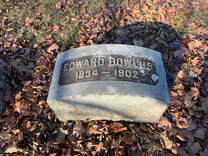 For good nature, I thought I would interject that Dr. Edward Bowlus (1834-1902), whose advertisement was below that of Dr. MacGill, is buried in Mount Olivet too. He can be found in Area Q (Lot 92), even though this fact deviates from my theme of concentrating on people buried within the proximity of our Key Chapel and having their names prominently appear in the newspaper of New Years Day, 1873. Finally, I will wrap up with the news story that fascinated me most from 150 years ago. It has all the imagery of "olde-towne" Frederick in all its seasonal majesty. All you have to do is use your mind to imagine the snow-covered streets, with candles burning in windows and people using the best transportation for the setting—horse drawn sleighs. Let this article set the mood, before I come to my masterful finish. Just like a picture-print from Currier and Ives! I’ve seen a couple of images that help paint the picture of Frederick at that time. We can only imagine "Oh what fun, it was to ride in a one-horse open sleigh" through the streets of town. A brilliant photograph from Frederick's "sleigh ride" past can be found on page 96 of Gorsline, Whitmore and Cannon's Pictorial History of Frederick (originally published in 1995). This photograph was taken by noted photographer J. Davis Byerly and was provided by Mrs. Frank Kelly for the book. The caption below reads: "Church Street sleigh ride, circa 1893. Sebastian G. Cockey, at the reins, pauses for photographer J. Davis Byerly in front of the Methodist Episcopal church on the first block of East Church street. Son Sprigg Cockey and daughter Miss Nannie (later Mrs. John Brosius) join Cockey for the winter's day ride. (Note: the former church site is the home of a parking deck, and the first rowhouse in the background is the former Frederick Visitor's Center, and today's headquarters for the Frederick Downtown Partnership.) Mr. Sebastian G. Cockey (the white-bearded man to the left in photo) was a farmer who, in 1873, resided at Evergreen Point directly south of Frederick City and Mount Olivet. His farm is denoted by his name (S. G. Cockey) on the 1873 Titus Atlas Map. Mr. Cockey lists his profession as farmer in the census, but I found that he also served as Frederick County's Register of Wills from 1867-1873. Sebastian Graff Cockey was born in 1811 and was one-time owner of the Landon House in Urbana during the American Civil War. A merchant at the time, Mr. Cockey hosted Jeb Stuart's famous Sabers & Roses Ball on September 8th, 1862. I only figured this out thanks to my unusual memory and love of local history, just now remembering standing in line in my younger years of the 1990s at the Frederick County National Bank branch on Rosemont Avenue. On the wall was a print by artist Dale Gallon which depicted the ball and was titled "Sabers & Roses." This beautiful illustration (published in 1989) captured my imagination and I almost bought a copy for myself. The caption Mr. Gallon included under the scene was as follows: "Urbana, MD, September 8, 1862 – After saying goodbye to Anne Cockey at a ball in Urbana, MD, on Sept. 8, 1862, J.E.B. Stuart and his men attack and drive off nearby Yankee raiders." Sebastian G. and both (grown) children pictured above during the sleigh ride are buried in the family plot in Mount Olivet's Area G/Lot 128. I question the date of the Byerly photograph being 1893 for the sole reason that Mr. Cockey died in 1888, and son Sprigg died in 1892. Sufficed to say, the photograph above had to be taken in the 1880s. However, thanks to my brain, memory, writing this story, and previous knowledge/research of Frederick history, I venture to say that the young debutante drawn by Mr. Gallon (talking to Gen. J.E.B. Stuart) was none other than Miss Nannie Cockey in the back seat of the sleigh. Born May 15, 1846, Nannie's given name was Ann Worthington Dorsey Cockey. She would later marry John Brosius, but likely never forgot dancing with the legendary Confederate cavalry commander. Talk about "Auld Lang Syne!" (NOTE: Here is a link to read more about the print and 1862 "Sabers & Roses Ball" event ) All of us familiar with hills and sledding understand the thrill that can be had with help from gravity to increase speed potential. Of course, horses aren’t involved. What about those horses traveling down hills in slick conditions with ice and snow road cover? I’m sure that was a dicey situation that required great command and patience by drivers. Another challenge came in navigating hills from bottom to top. I think immediately of parts of Bentz Street, South Street, and, most of all, South Market Street. This major thoroughfare was the main route in and out of Frederick and part of the Old Georgetown Pike. The Cockeys and others would navigate their sleighs up and down “Cemetery Hill,” denoting the incline from the intersection of South and South Market Street, up past the Barracks/Maryland School for the Deaf sight, and terminating at Mount Olivet’s front gate as the apex. And yes, Mount Olivet can boast the highest elevation in Downtown Frederick. Sledding has never been advised (let alone allowed) in Mount Olivet with obstacles that (if hit) could place you here permanently. However, I'm assuming that traversing a snow-covered South Market Street could have been a thrill, or a terror depending on your perspective. Our Frederick Examiner newspaper of January 1st, 1873 includes one of the latter, but thankfully no one wound up in the cemetery. Well, not until years later for the individuals involved. Mr. John Myers is by all accounts John Myers III, born 1798 in Taneytown. I simply found him in the 1880 Census living as a widower with his son James and family on North Market Street. His background seems to have been farming. Mr. Myers would die 11 years after the sleigh ride mishap in 1884, while staying in Washington, DC. He is buried in Area A/Lot 14, basically 20 yards equidistant from Dr. MacGill and undertaker C. C. Carty. Mr. Myers' esteemed partner in this two-horse sleigh mishap, Horace Clarke, was the son of Col. James C. Clarke who we have wrote about on many occasions as a transportation giant. Col. Clarke is the namesake of Frederick’s Clarke Place, located nearby conveniently off South Market on what could also be technically considered the unofficial, geographical landform of Cemetery Hill. Interestingly, Horace Woodward Clarke would take up residence on this prestigious street which opened a few decades after the sleigh accident in the 1890s. Born on September 27th, 1855, Horace was a native of Baltimore and lived in various parts of the country where his father served as president of major railroads. These included Chicago, New Orleans and Mobile, Alabama. He lived at 16 Clarke Place, and many may have heard of stories of the road being among the first in town paved with cobblestones. Not wanting to hear the clackety-clack of horse hoofs leading milk wagons down this street, gates were put up on both ends. I presume this also thwarted sleigh traffic as well. With the advent of automobiles at the turn of the century, sleighs faded from sight—kept alive in our imagination through those songs we have heard once again a thousand times over the last 4 weeks and suddenly disappearing for the next 11 months as they always do. Horace Clarke died on November 1st, 1912. He would be buried next to his parents on their family plot next to the Key Chapel and known as the Clarke Circle. Years before, this private lot was obtained for the burial of Col. Clarke in December of 1902. Mrs. Susan (Shafer) Clarke had died in 1892 and was re-interred to her native town from a cemetery in Mobile. The Clarke Circle grave plot was built adjacent the Public Vault and boasts a beautiful obelisk. Outside Myers and Clarke, another individual’s name appears in connection to the ill-fated Sleigh Ride of New Years 1873. Edward Sinn (1819-1902), is only yards away from all these folks, residing in Area H/173. The article states that a team of four horses parked in front of Sinn’s Livery could have been a cause of the sleigh accident, and thankfully these horses didn’t break free to cause additional pandemonium in Downtown Frederick that fateful night. I swear to God, that the instrumental Muzak version of “Sleigh Ride” is playing on our mausoleum sound system as I write this last paragraph here on Thursday, December 29th at exactly 5:45pm . Unfortunately, those surrounding me cannot attest to my claim, but I just took some A/V proof with one of those newfound technologies that we are so fortunate to have on the advent of 2023. (see video at end as it is video of the Mausoleum atrium...sorry about the fountain) No sleigh rides for anybody in Frederick this past December. The New Years holiday is a little too mild for snow as it brought rain on New Years Eve. However, we sure felt Arctic cold temperatures a week prior. Happy New Year to you all, and thank you for continued support of our ongoing preservation efforts at Mount Olivet which includes these Stories in Stone, gravestone repair and cleanings, Veteran events such as flag-planting for Memorial Day and Veterans Day and Wreaths Across America, and continued remembrance of those buried here through lectures, walking tours and visitation. "Auld Lang Syne"....join us in remembering the people and events of the past, the true essence of cemeteries and memorial grounds.
3 Comments
12/31/2022 06:35:54 pm
Love all your stories . This one all the pictures of old Frederick. I grew up on South Market ,223. The picture of 1931 looking up to the cemetery, I found it interesting and so rural in the distance. I was not but 11 years later born 1942.The picture of the stable , I walked by it all the time going down town. My grand father always said it was a stable as there was no curb so the carriages could come out.I still remember it and always looked for it.
Reply
Bill Lebherz
1/1/2023 11:05:45 am
Great post!. So interesting to see the Methodist Church and adjacent building. My great grandfather, Rev. E. Holmes Lamar, was pastor of this church back then. The adjacent building was the parsonage, where my grandmother Florence Lamar and her sister Katherine Lamar grew up. Florence married Francis X. Staley, whose father founded the Monocacy Valley Canning Co. on South St. Katherine married James Cramer, son of Noah Cramer. James and Katherine owned and lived at Rose Hill Manor in the early part of the 20th century.
Reply
Patti Finn
1/2/2023 04:08:44 pm
I learn so much from your “Stories in Stone” posts and enjoy each and every one of them.
Reply
Leave a Reply. |
STORIES
|
Archives
July 2024
June 2024
May 2024
April 2024
March 2024
February 2024
January 2024
December 2023
November 2023
September 2023
August 2023
July 2023
June 2023
May 2023
April 2023
March 2023
February 2023
January 2023
December 2022
November 2022
October 2022
September 2022
August 2022
July 2022
June 2022
May 2022
April 2022
March 2022
February 2022
January 2022
December 2021
November 2021
October 2021
September 2021
August 2021
July 2021
June 2021
May 2021
April 2021
March 2021
February 2021
January 2021
December 2020
November 2020
October 2020
September 2020
August 2020
July 2020
June 2020
May 2020
April 2020
March 2020
February 2020
January 2020
December 2019
November 2019
October 2019
September 2019
August 2019
July 2019
June 2019
May 2019
April 2019
March 2019
February 2019
January 2019
December 2018
November 2018
October 2018
September 2018
August 2018
July 2018
June 2018
May 2018
April 2018
March 2018
February 2018
January 2018
December 2017
November 2017
October 2017
September 2017
August 2017
July 2017
June 2017
May 2017
April 2017
March 2017
February 2017
January 2017
December 2016
November 2016



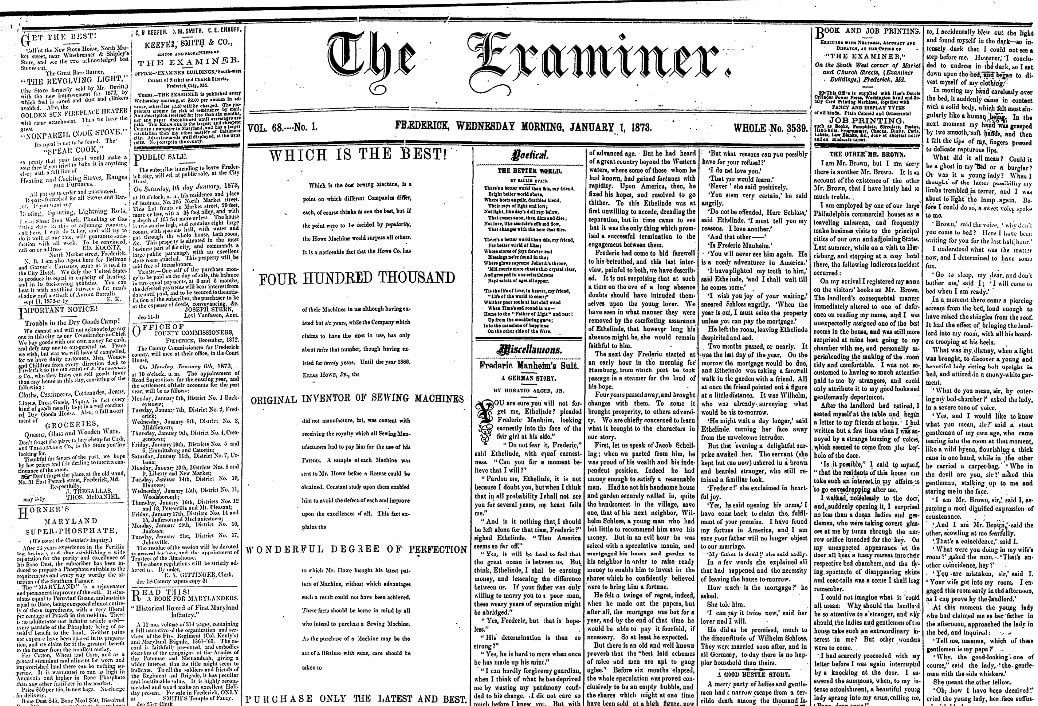

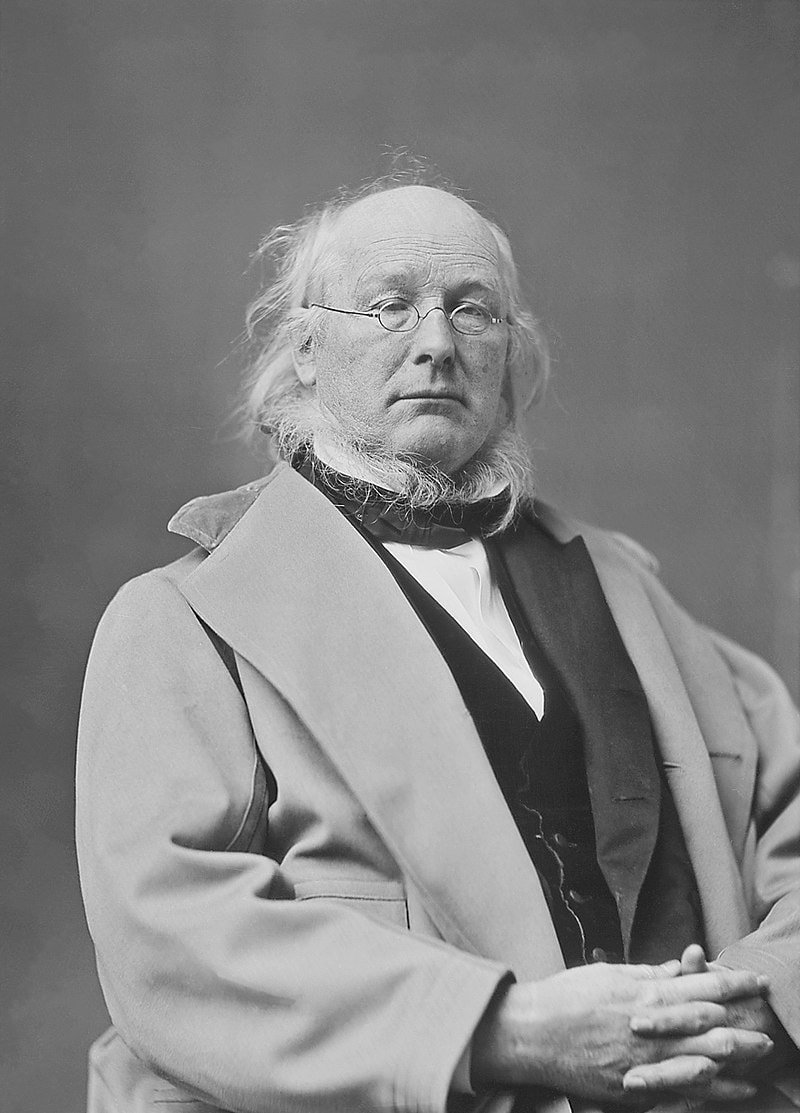



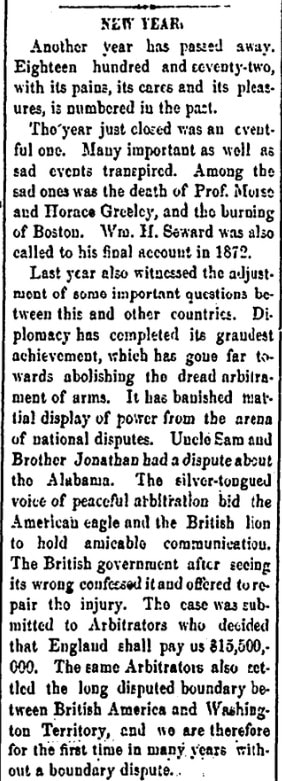










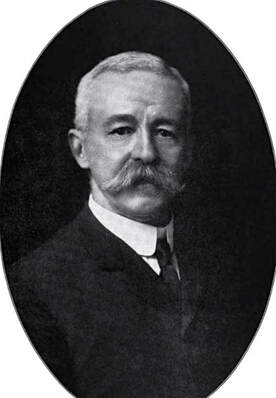

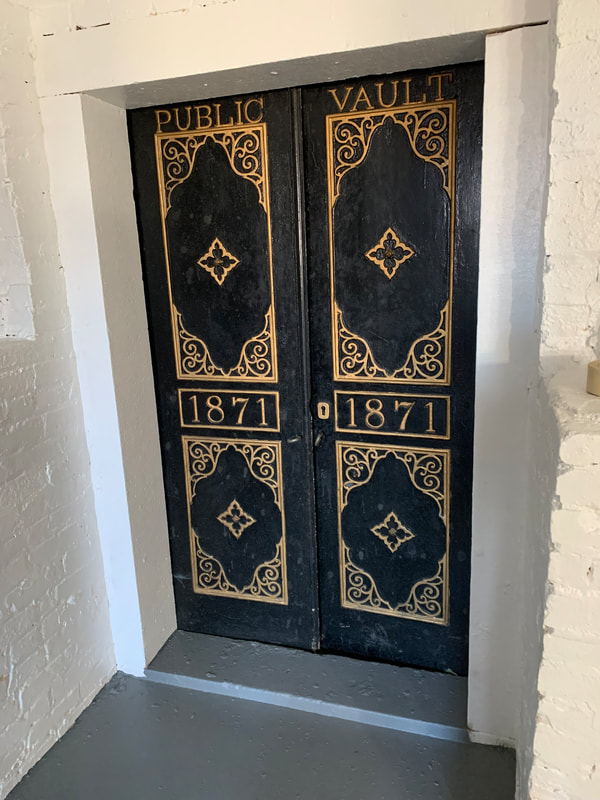











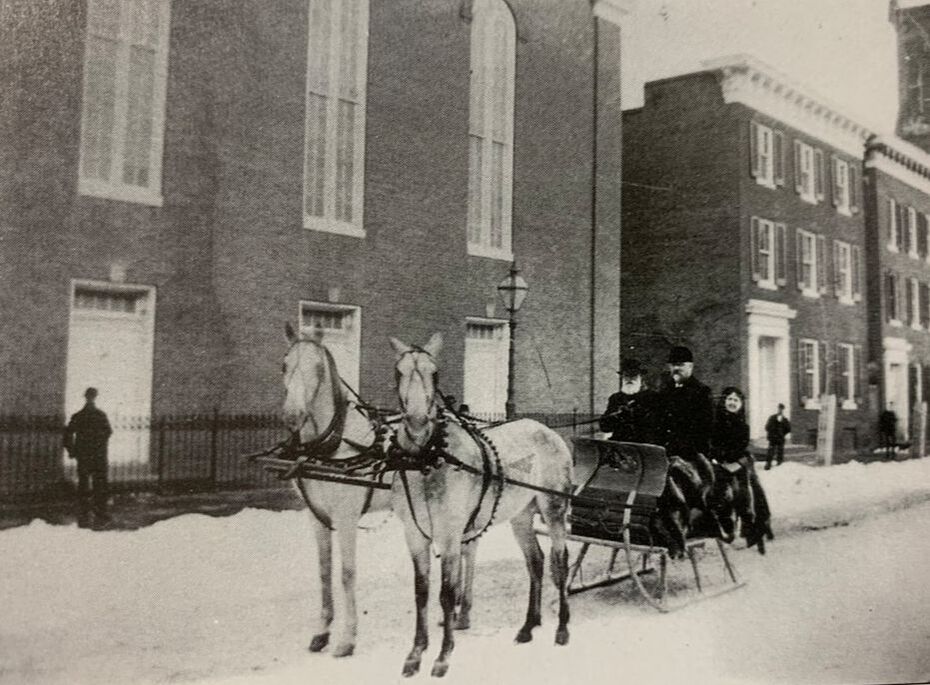



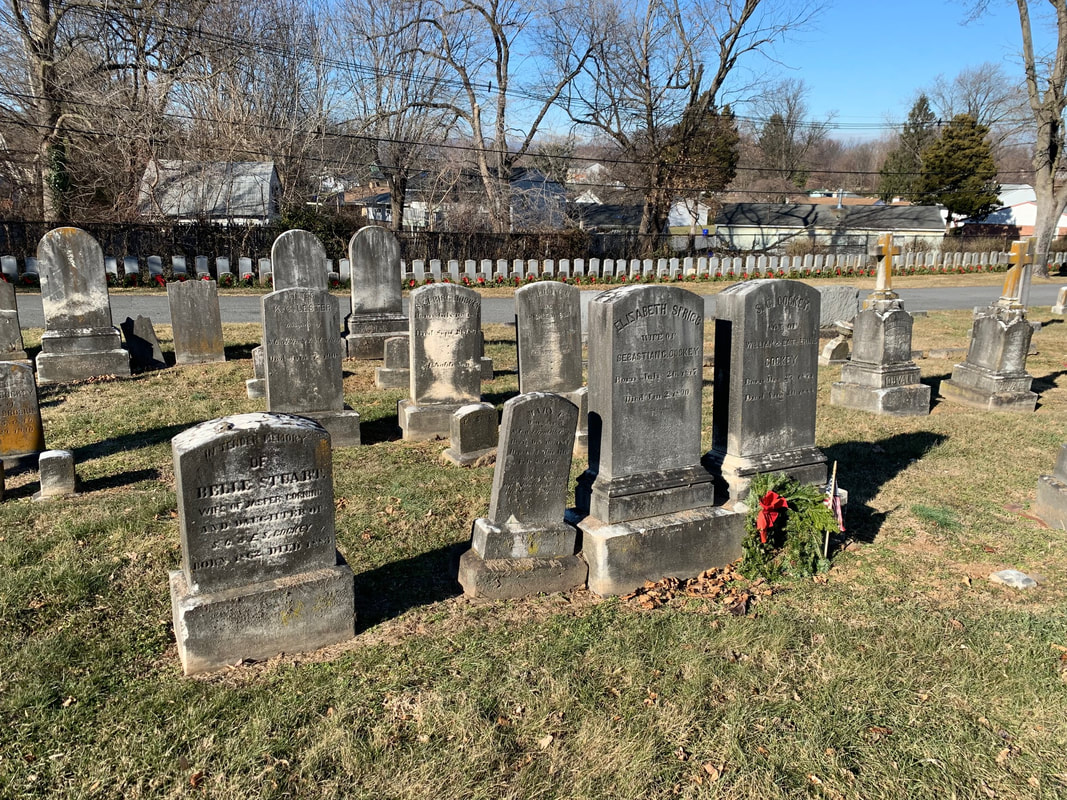
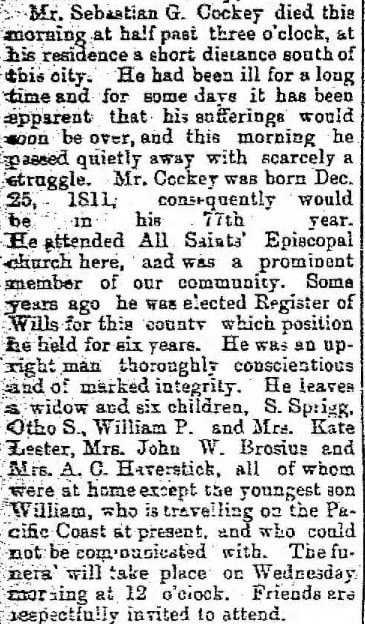






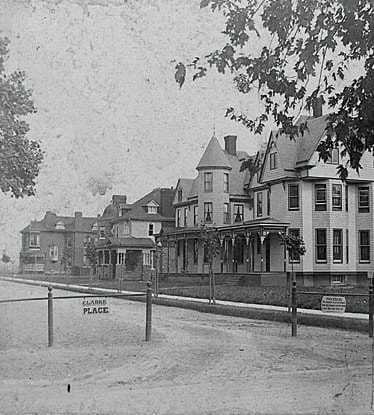

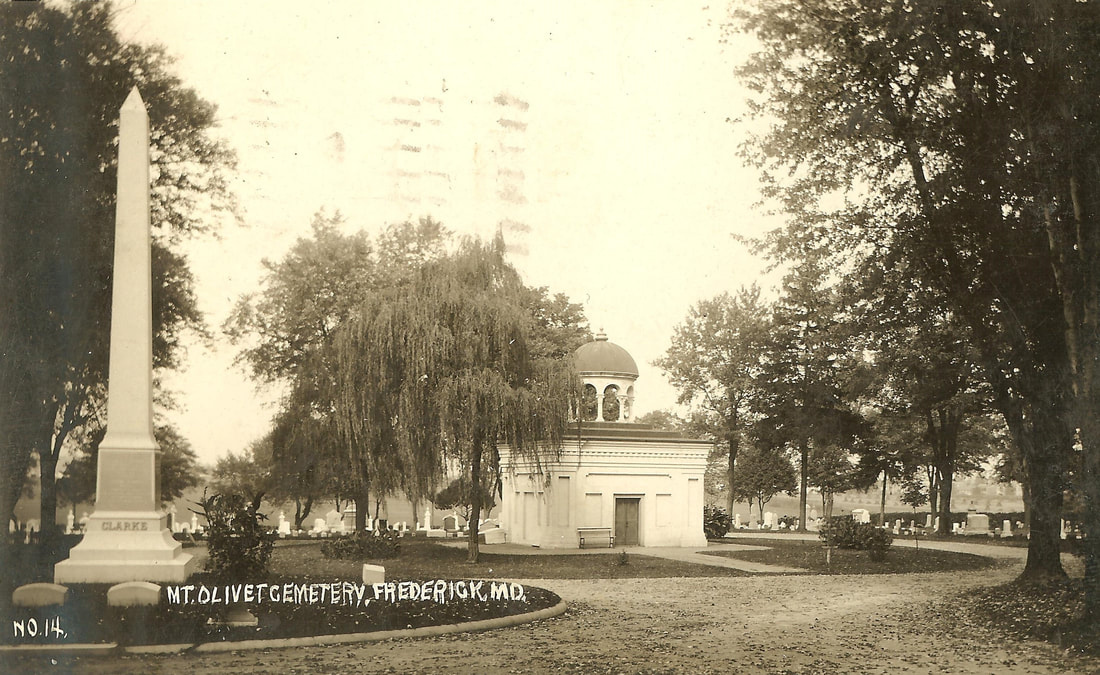

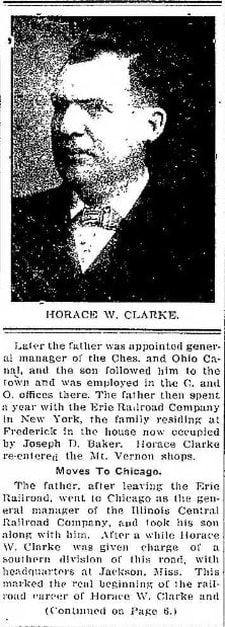







 RSS Feed
RSS Feed